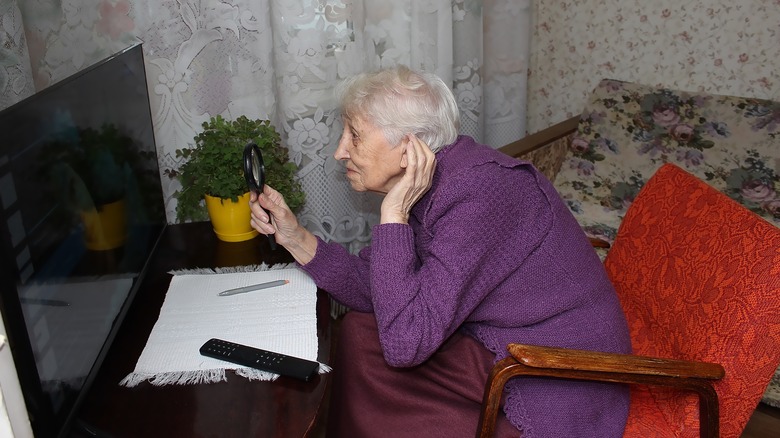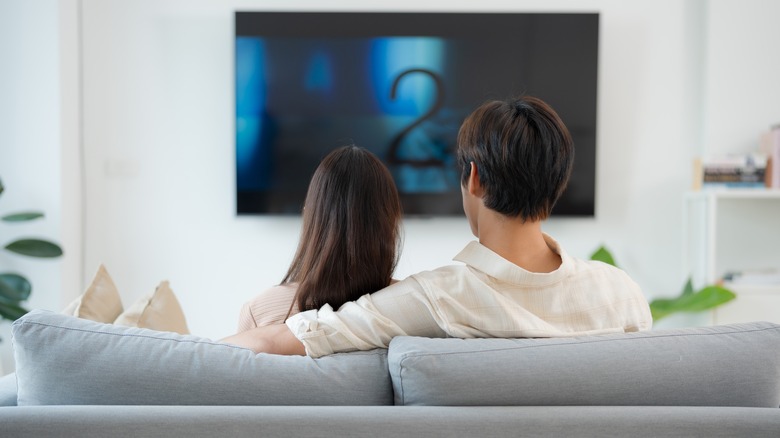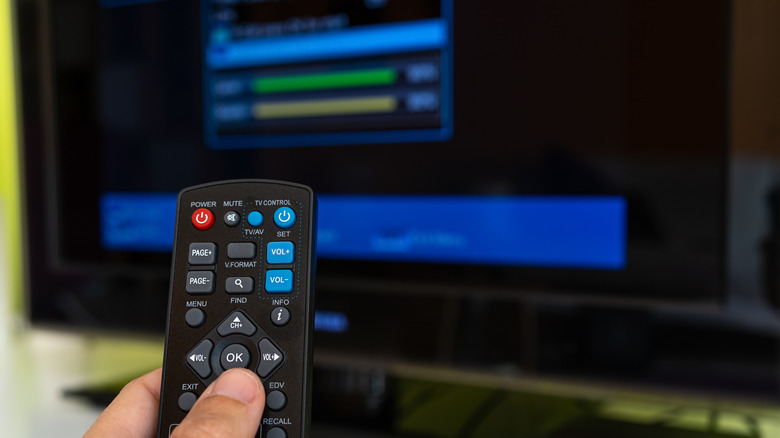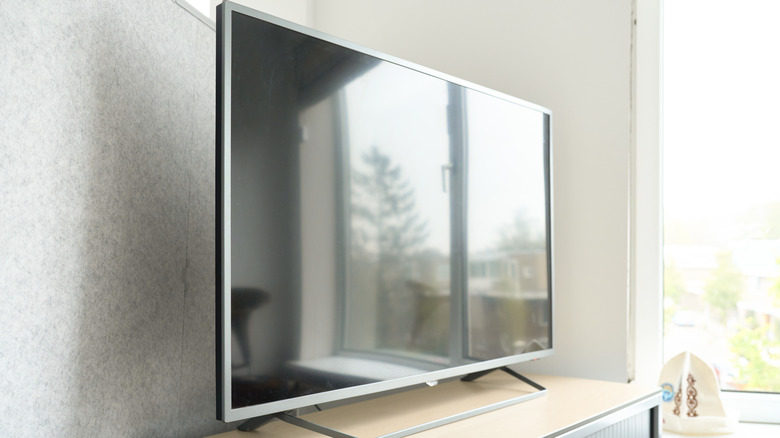Is Your TV Too Dark? Here Are 3 Things You Can Do To Make It Brighter
If you were an avid fan of HBO's "Game of Thrones," tuning into the show every Sunday when there were new episodes, then you remember the excruciatingly dark "The Long Night" episode. While that wasn't the first case of an episode being too difficult to see, it seems to have made viewers more conscious of their television's brightness. It was a tough episode to follow. Unfortunately, showrunners and cinematographers purposefully make episodes dark for creative reasons. There's no doubt that a horror series or an episode of a show darker in tone would benefit from a darker picture, but if the audience can't tell what's happening, it's not going to render favorable results.
Luckily, there are some things you can do in the house to improve the quality of your TV screen. You definitely want to ensure you minimize the glare coming off your TV because that's going to make a major difference even for the brightest of screens. Glossy screens are more prone to reflections, so you want to aim lights in the room away from the TV, for starters. Closing curtains will prevent sunlight from blocking your view as well. It's not a terrible idea placing your TV in front of a window. Unfortunately, that can also pose a few issues, such as blocking a nice view or making cleaning more difficult. If possible, you can also tilt the TV toward you to reduce glare.
Once you've done all that, adjusting the TV's settings is your next step.
Adjust the backlight to improve a TV's visibility
TVs today have two ways to adjust their brightness. Instead of going straight to the "Brightness" setting, which you understandably want to do, play with the "Backlight" settings first. Adjusting the backlight is more like what one would expect from adjusting the brightness, as it makes the screen overall brighter or darker. It's identical to what happens when you adjust the brightness on your phone.
Most TVs label it as "Backlight" but some brands might list it as "Pixel Brightness." Sometimes it's called Peak Brightness, Peak Luminance, Local Dimming, or even OLED Pixel Brightness. Whatever it's called, it's an underrated feature on modern TVs that you should take advantage of.
There's no perfect setting for this, as it's all a matter of preference. However, if you are tired of movies or TV episodes being too hard to see, it's best to keep the backlight at its brightest. Be warned, though, if it's too bright for you, it can cause headaches and eye strain while also potentially shortening the TV's lifespan. Additionally, it's a good idea to adjust this setting based on the lighting in the room. A bright room calls for the setting to be higher, while it's better for the backlight to be dimmer in a darker room.
Adjusting the TVs brightness is likely the first thing you tried
The first and seemingly most obvious method to improve the brightness of your TV is to go straight for the "Brightness" setting. This setting doesn't technically do what most viewers think it does. For most TVs, this setting is actually adjusting what it considers its absolute black. So those shadows you see on the screen will either be a lighter shade of black or a darker shade, depending on the way you position the slider. This can have adverse effects on your overall viewing experience, though, because the picture will look flat if it's set too high. Set it too low, however, and then it's going to feel like you're rewatching "The Longest Night," struggling to make out any details.
A good strategy to get the "Brightness" setting to your ideal level is by turning it all the way down. Yes, everything is hard to see now, but we're not done. Gradually increase the level until there are still shadows, but you can make out some detail within those shadows. You want there to be enough depth and detail in the picture without it appearing washed out.
Check ambient light settings on the TV
There are a lot of modern TVs that have light sensors that detect the amount of light in the room so it can adjust the TV's pixel brightness accordingly. It's not a terrible setting to have if you don't need the screen bright all the time. It's ideal for those who adjust the backlight in accordance with the lighting in the room, as it saves them the hassle of frequently adjusting the settings. If that's not something you want for your TV, however, turn it off when it comes out of the box, as it's a default setting. Sure, it's designed to keep you from straining your eyes, but it doesn't do much in the way of helping you make out the details of those darker scenes.
There are also certain picture modes that automatically dim the screen to conserve energy. While that will slightly reduce your electric bill and maximize the TV's lifespan, if it's not your priority, and you prefer to be able to tell one character apart from another, you want to turn off any energy-saver mode. If none of these benefit you, and you're still struggling, make sure any peripherals you're using –like a Fire Stick– are set to the same resolution as your TV. Unfortunately, it could be that your TV is on its last legs.



